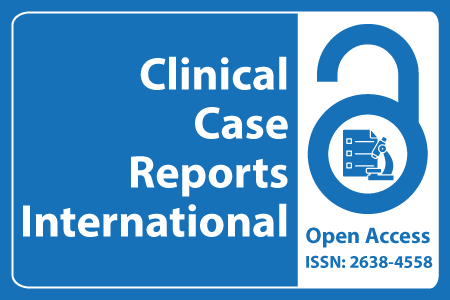
Journal Basic Info
- Impact Factor: 0.285**
- H-Index: 6
- ISSN: 2638-4558
- DOI: 10.25107/2638-4558
Major Scope
- Orthopedics & Rheumatology
- Chronic Disease
- Lung Cancer
- Asthma
- Epidemiology
- Cardiology
- Sleep Disorders & Sleep Studies
- Physical Medicine & Rehabilitation
Abstract
Citation: Clin Case Rep Int. 2023;7(1):1577.DOI: 10.25107/2638-4558.1577
Detection of KatG Mutation in MDR Mycobacterium tuberculosis Isolates by PCR-RFLP and DNA Sequencing
Ilyas M and Niaz F
Riphah International University, Islamabad, Pakistan
*Correspondance to: Muhammad Ilyas
PDF Full Text Research Article | Open Access
Abstract:
Objective: Tuberculosis (TB) is among the widespread and rapidly growing infections in the world. Furthermore, TB is one of the major public health problems in Pakistan as every year 48,000 Pakistani dies due to this infection. Pakistan ranks fifth among high burden countries worldwide. The convergence of Tuberculosis (TB), Human Immunodeficiency Virus (HIV), COVID-19, and Multi-Drug Resistance (MDR) strains of Mycobacterium tuberculosis (M. tb) has created an unprecedented and threatening global scenario. The objective of this study was to elucidate the genetic mechanism underlying drug resistance in local TB isolates. Methodology: PCR Amplification: The hotspot region of the KatG gene, responsible for Isoniazid (INH) resistance which encodes catalase peroxidase, is amplified using PCR. The amplified DNA is subjected to RFLP, where specific restriction enzymes were used to cleave the DNA at known restriction sites. The amplified DNA is further analyzed through Sanger sequencing, which determines the precise nucleotide sequence of the region. Results: PCR-RFLP revealed forty-five out of eighty INH resistant M. tb strains had mutations in KatG (codon 315) which is 56.2% of all cases. Sequencing results revealed that this is substitution mutation; AGC to ACC (Ser315Thr). Conclusion: It may be concluded that majority of INH resistance is due to the mutation in the codon 315 of KatG in local isolates. Furthermore, PCR-RFLP technique could be considered as a reliable method for the early detection of KatG mutations in MDR-TB.
Keywords:
Tuberculosis; Multi-Drug Resistance (MDR); Isoniazid; PCR-RFLP
Cite the Article:
Ilyas M, Niaz F. Detection of KatG Mutation in MDR Mycobacterium tuberculosis Isolates by PCR-RFLP and DNA Sequencing. Clin Case Rep Int. 2023; 7: 1577.













